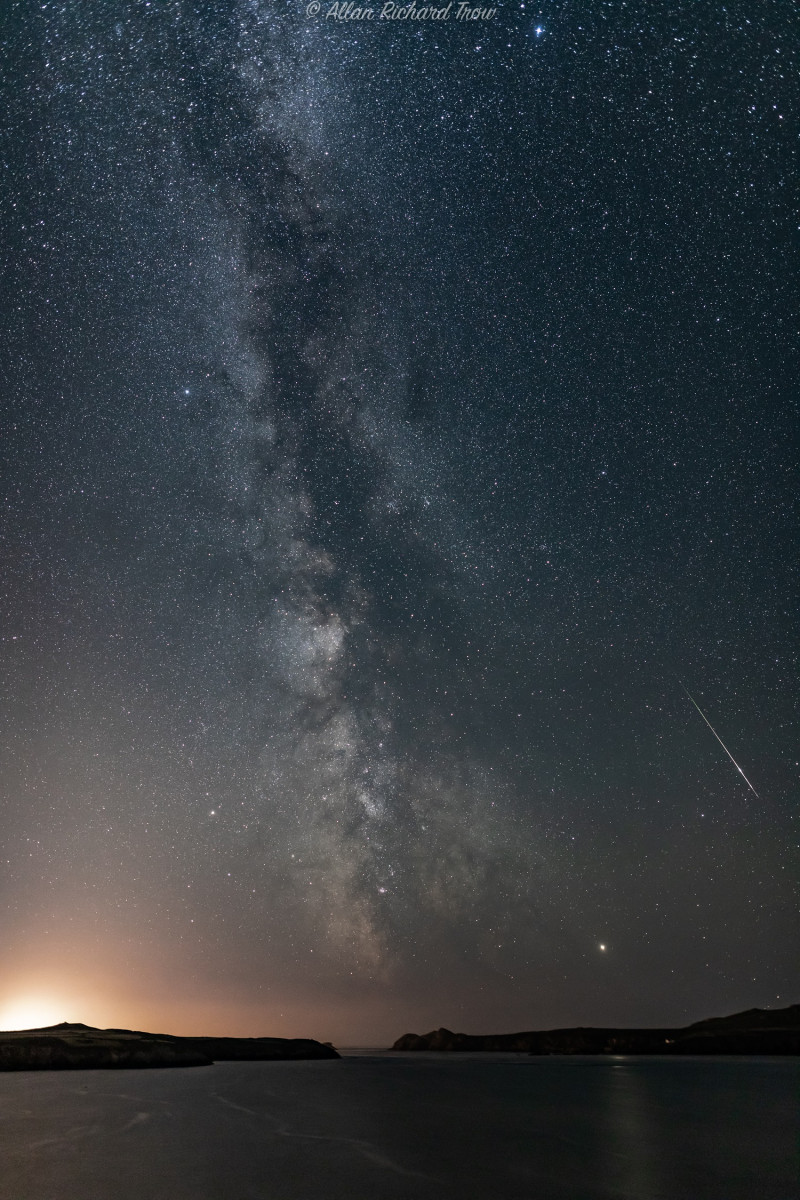This year the viewing of the Perseids is ideal, as the phenomenon will occur just four days before the New Moon, so the dimly lit moon will not prevent us from seeing the shooting stars.
The Perseids, the most spectacular annual shower of ‘shooting stars’, are expected to peak this evening (Saturday August 12), offering a unique spectacle in the sky. This year the viewing of the Perseids is ideal, as the phenomenon will occur just four days before the New Moon, so the dimly lit moon will not prevent us from seeing the shooting stars.
“The Perseids are one of the most impressive meteor showers of the year, as their frequency can reach up to 100 meteors per hour, when observing from a dark place,” points out the astrophysicist at the Thision Visitor Center of the National Observatory of Athens , Fiori-Anastasia Metallenou, speaking to APE-MPE.
Ms. Metallinou clarifies that no special equipment is required to observe the phenomenon: “Choose a dark location, away from city lights and look at the night sky on the night of August 12.”
Crashing stars or meteors are the result of small particles entering the Earth’s atmosphere at high speed, usually about 60 kilometers per second. Pieces of debris are heated by friction with the air and are usually destroyed in less than a second, at an altitude of more than 80 km. The superheated air around the meteor glows briefly and is visible from the ground as a bright streak known as a “shooting star.”
Up to six sporadic meteors are visible every hour throughout the year. During a shower, however, the Earth passes through a cloud of debris left behind by comets, so many more meteors are observed entering the atmosphere. During the year we observe several meteor showers, the names of which derive from the constellation from which they appear to originate. The Perseids are one of the most spectacular meteor showers of the year.
The Perseids originate from the remnants of Comet Swift-Tuttle. This particular meteor shower gets its name from the point in the sky where the meteors seem to come from, located in the constellation Perseus. The phenomenon occurs every year at the same time, but the rate of rain can vary greatly from year to year.
This year’s maximum of the phenomenon will be observed tonight and until tomorrow morning, when shooting stars will appear with greater frequency, although in total the Perseids last from July 17 to August 24.
The phenomenon is best seen from the northern hemisphere and without clouds, and as this year’s peak occurs just four days before the New Moon, when the moonlight will be only 8%, viewing the phenomenon is expected to be spectacular.
The great Dionysis Simopoulos, honorary director of the Planetarium of the Eugenide Foundation, wrote last year, just a few days before his death, in his article about the rain of the Perseids, on the website of the Foundation:
“From the countryside of your summer holidays, every August, don’t forget to look up at the starry sky, when after your night out, lying on the beach or on the comfortable deckchair in your garden, the sky will reward you with the wonderful sight of its shining stars and the glimpses of the dozens of stars that will cross it from one end to the other. And although modern knowledge does not allow us to do so, nevertheless when you see the bright line left behind by some “shooting star”, do not forget to follow the opinion expressed by our people, and make a wish! After all, you have nothing to lose!”
Source :Skai
I am Terrance Carlson, author at News Bulletin 247. I mostly cover technology news and I have been working in this field for a long time. I have a lot of experience and I am highly knowledgeable in this area. I am a very reliable source of information and I always make sure to provide accurate news to my readers.











